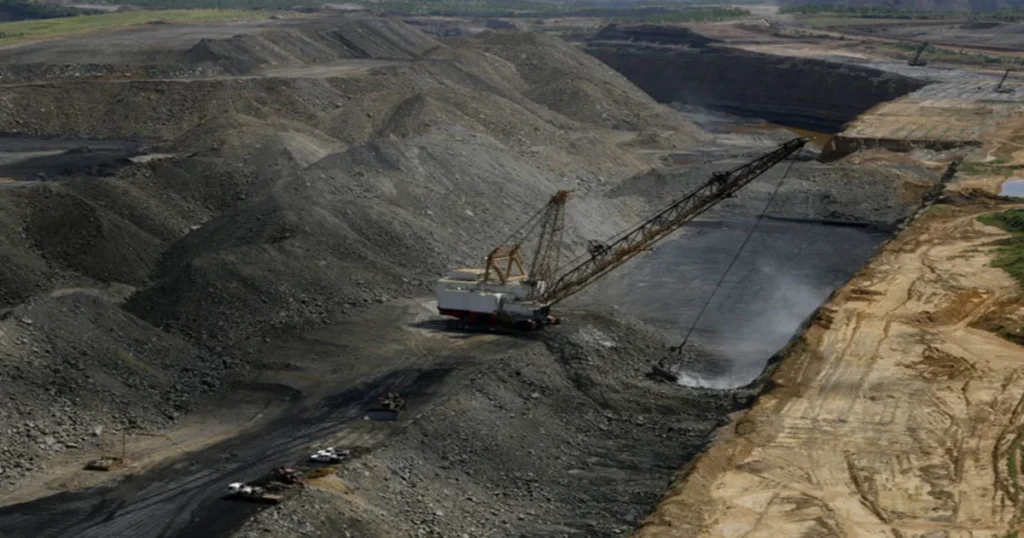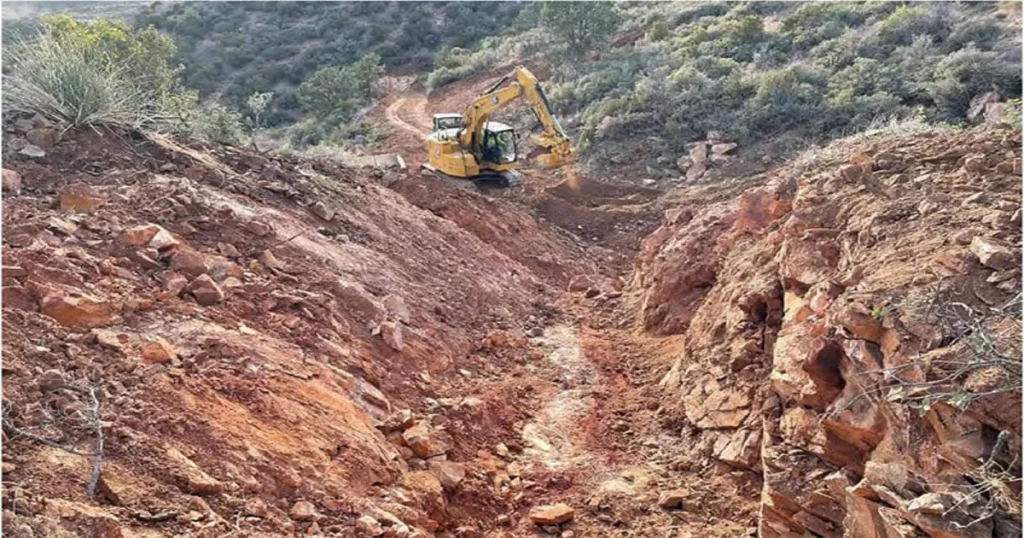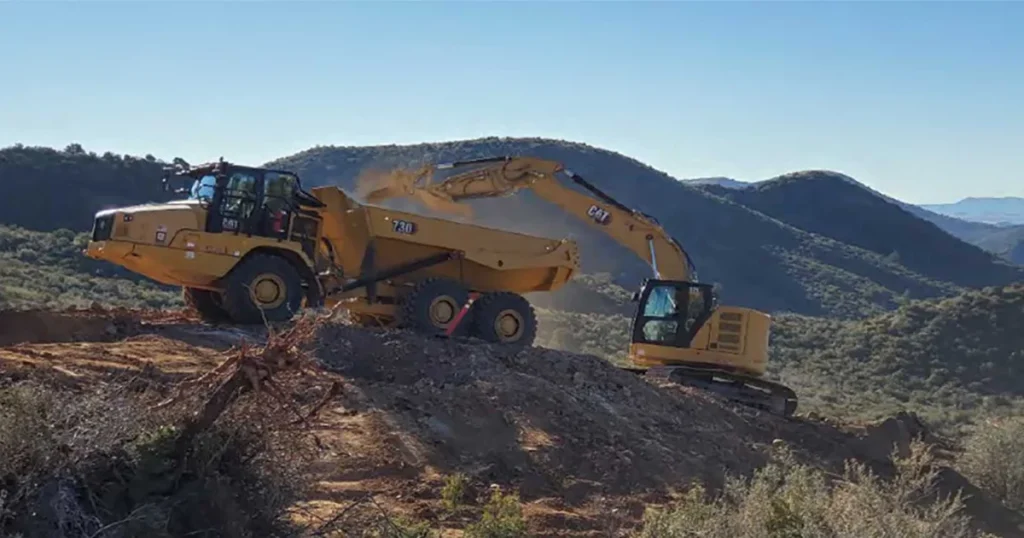The majestic landscapes of Prescott have long borne witness to the unique tapestry of life and culture woven by its indigenous inhabitants. Yet, in recent years, the ever-advancing march of mining has cast a shadow on these native communities.

The impact of mining on indigenous communities in Prescott has triggered a slew of socio-economic, cultural, and environmental concerns. This article delves deep into the myriad facets of these effects, exploring the historical context, the present challenges, and the potential pathways forward.
Historical Overview
Nestled amid the beauty of Arizona, Prescott’s indigenous communities have thrived for countless generations. Their deep-rooted connection with the land, and their age-old traditions, have shaped the area’s rich cultural landscape.
However, the allure of mineral riches in Prescott gradually shifted its destiny. From the late 19th century, mining began making inroads into the region, driven by the booming demand for precious metals and minerals. This transition not only ushered in a new era of economic prosperity but also paved the way for significant changes in the socio-cultural fabric of Prescott’s indigenous communities.
Social Impacts
The mining activities in Prescott have triggered significant social ripple effects within indigenous communities. Traditional ways of life, deeply rooted in the rhythms of the land, are being upended, leading to shifts in communal roles, relationships, and identities.
The influx of external populations for mining-related work has also introduced new dynamics, occasionally leading to cultural clashes and tensions. While some community members embrace the opportunities presented, others lament the erosion of cultural norms and values, painting a complex picture of social transformation.
Displacement and land rights
For indigenous communities, land is not just a piece of earth. It’s an emblem of their history, culture, and identity. But, as mining projects gained traction, many of these communities found themselves uprooted from their ancestral homes.
Traditional lands and sacred sites became battlegrounds. In some instances, mining activities have encroached upon, or even completely erased, areas of deep spiritual and cultural importance. Research indicates that the destruction of such sites is a global concern, posing threats to indigenous cultures worldwide.
Resettlements, often touted as ‘solutions’, rarely offer equivalent value. Displaced families, accustomed to a life bound closely with nature, now grapple with unfamiliar urban settings or diminished natural resources.
Impact on indigenous cultures and traditions
Beyond the visible scars of displaced communities lies a subtler, yet profound, erosion of cultural identity. Mining-induced disruptions often lead to a rupture in the delicate threads that bind the community together.
Loss of cultural heritage sites, as mentioned earlier, is just the tip of the iceberg. Elders, once revered as custodians of ancient wisdom, find their roles marginalized in the new socio-economic dynamics.
Conversely, shifts in cultural practices are inevitable. With a significant portion of the youth drawn to mining jobs or urban allure, many traditional practices and rituals face the threat of extinction. These changes also give rise to generational conflicts, as the values of the young and old diverge.
Socio-economic repercussions
At first glance, mining appears to be a boon, promising jobs and prosperity. However, a deeper dive reveals a more complex narrative.
Employment does surge, but often, these jobs go to outsiders with specialized skills. Indigenous individuals, on the other hand, might find themselves confined to lower-paying, riskier positions. Over time, this can exacerbate income inequalities within the community.

Furthermore, an over-reliance on the mining economy is perilous. When mines shut down or when mineral prices plummet, entire communities can be plunged into economic despair.
Environmental Impacts
The environmental consequences of mining in Prescott are profound, with its indigenous territories bearing the brunt. Land degradation, water contamination, and deforestation are among the evident repercussions, leading to a loss of biodiversity and disruption of ecosystems.
As these landscapes, once rich in flora and fauna, face mounting pressures, the ecological balance, essential for the sustenance and traditions of the indigenous communities, is threatened. The challenge remains: how to merge the demands of modern industry with the preservation of Prescott’s natural heritage.
Degradation of land and habitats
Mining, especially open-pit processes, drastically alters the topography. The resulting land degradation not only mars the beauty of the region but also disrupts the habitats of countless species.
- Loss of flora and fauna: Numerous plant and animal species, some of which hold special cultural significance, face habitat loss.
- Long-term consequences: Abandoned mine sites, if not reclaimed, can turn into ecological wastelands, as highlighted by the EPA. This degradation can take decades, if not centuries, to reverse.
Water sources and pollution
Water, the essence of life, bears the brunt of mining activities. From diverted rivers to polluted streams, the impacts are manifold.
The impact on freshwater resources is immediate and long-lasting. Mining often requires vast amounts of water, leading to the depletion of local sources. What’s left behind may be contaminated with chemicals used in the extraction processes.
Long-term sustainability concerns arise too. Polluted waterways can lead to a cascade of downstream effects, harming agriculture, fisheries, and human health. A study from ScienceDirect sheds light on the profound repercussions of mining-related water pollution on a global scale.
Health and Wellness
The repercussions of mining in Prescott extend beyond the environment, deeply affecting the health and wellness of its indigenous communities. Direct exposure to mining activities brings physical health risks, from respiratory ailments to waterborne diseases.
Additionally, the profound societal shifts and disruptions to traditional life patterns can lead to psychological and emotional distress. For these communities, the challenges aren’t just about preserving the land, but also safeguarding their collective well-being in the face of rapid industrial change.
Direct health risks from mining activities
Mining is an inherently hazardous profession. Dust, chemicals, and heavy machinery pose daily risks.
- Respiratory ailments: Prolonged exposure to dust can lead to conditions like silicosis or even lung cancer.
- Waterborne diseases: As touched upon earlier, contaminated water sources can cause a plethora of diseases, from skin conditions to severe gastrointestinal issues.
Psychological and emotional wellbeing
The upheavals induced by mining operations have deep-seated psychological ramifications.

Stress from displacement can manifest in myriad ways, from depression to substance abuse. The pain of losing one’s home, combined with the uncertainties of the future, can be overwhelming.
Moreover, the phenomenon of cultural grief is palpable. As traditions wane and cultural anchors are lost, a collective sense of mourning pervades the community.
Legal and Political Impacts
The intertwining of mining interests and indigenous rights in Prescott presents a complex legal and political tapestry. While regulations aim to safeguard indigenous territories, their enforcement often remains contested.
The tug-of-war between corporate pursuits and native rights consistently fuels debates and activism, reflecting the intricate challenge of harmonizing economic ambitions with age-old cultural and territorial rights. As legal battles unfold, the voice of Prescott’s indigenous communities becomes increasingly pivotal in shaping the region’s future trajectory.
Policies governing mining in indigenous territories
While legislation exists to protect indigenous land rights, their enforcement remains a challenge. Existing regulations, such as those laid out in the Indian Mineral Development Act of 1982, outline the processes for mineral development on indigenous lands.
However, gaps in these legislations and their interpretation can sometimes lead to unfair practices.
Indigenous activism and resistance
Against the backdrop of these challenges, indigenous activism has emerged as a potent force. From peaceful protests to legal battles, these movements seek justice, reparation, and most importantly, a voice in their future.
Prominent cases, like the Standing Rock protest, showcase the indomitable spirit of indigenous communities defending their rights.
International organizations, like the United Nations, have also played pivotal roles, underscoring the importance of indigenous rights in the global discourse.
Economic Impacts
Mining’s economic promise is a double-edged sword for Prescott’s indigenous communities.
Benefits to the wider economy are undeniable. Infrastructural developments, increased employment opportunities, and a surge in local businesses often accompany mining projects.
However, the localized costs can be steep. While the broader region or country might enjoy the economic windfalls, the immediate communities bear the brunt of the socio-environmental consequences.
Furthermore, the debate on fair compensation and royalties is ongoing. While mining companies stand to make vast profits, the communities, whose lands they exploit, often receive a mere fraction of the revenues. Negotiating fair deals, that take into account not only the immediate land value but also the long-term impacts on the community, remains a challenge.
Potential Solutions and Initiatives
Amidst the myriad challenges, rays of hope shine through. A confluence of policy interventions, technological innovations, and community initiatives can pave the path forward.
Empowering indigenous communities in decision-making is crucial. Gone are the days when top-down decisions would be thrust upon communities. In the modern era, the ethos is shifting towards participatory decision-making, where communities play a central role in shaping their destinies.
Sustainable mining practices offer another beacon of hope. By leveraging modern technologies and methodologies, it’s possible to extract minerals with a reduced environmental footprint. The World Bank’s initiative on Climate-Smart Mining offers insights into such sustainable practices.

Additionally, rehabilitation and conservation initiatives are gaining momentum. From replanting forests to rehabilitating mined lands, these efforts aim to heal the scars left by mining operations.
FAQs:
In this section, we will be delving into some of the most common inquiries and curiosities that surround our topic.
Why is mining in Prescott particularly impactful for indigenous communities?
Mining in Prescott, like many other regions, intersects with indigenous territories. These lands aren’t mere plots of earth for the native communities; they are imbued with cultural, spiritual, and historical significance. Mining disruptions, therefore, have profound socio-cultural ramifications.
What steps are currently being taken to address the issues?
A mix of policy interventions, community activism, and global attention is driving change. Legislative reforms, sustainable mining practices, and community empowerment initiatives are some of the steps in the right direction.
How can individuals and organizations help or get involved?
Awareness is the first step. Supporting indigenous rights movements, advocating for sustainable mining, and participating in rehabilitation initiatives are ways to make a difference.
Are there examples of sustainable mining practices in other regions?
Yes, several regions globally are pioneering sustainable mining. From water conservation initiatives in Australia to land reclamation projects in Canada, the global mining industry is gradually recognizing the need for sustainable practices.
What is the role of international bodies in protecting indigenous rights?
International bodies, like the United Nations, play a pivotal role in setting the global agenda. Their conventions, resolutions, and interventions underscore the importance of indigenous rights and offer a platform for indigenous voices on a global stage.
Conclusion:
The impact of mining on Prescott’s indigenous communities underscores a broader global challenge: balancing progress with preservation. As these communities grapple with socio-cultural and environmental shifts, the collective responsibility intensifies.
The path forward demands collaboration from all stakeholders, marrying economic aspirations with social justice and environmental stewardship. By honoring both the land and its age-old custodians, a harmonious future remains within reach.



Leave a Comment
You must be logged in to post a comment.